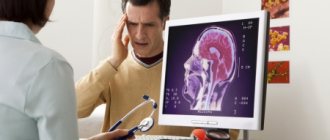But in the case of a contrast shower, you need to gradually increase the contrast of the water temperature. An important element of dealing with morning anxiety is breakfast, which is not advisable to skip. In this regard, proper nutrition in general should be built on the basis of increasing the consumption of carbohydrates, which help the production of serotonin, which promotes calm. These foods include oatmeal, brown rice, and whole wheat. Equally important is increasing your consumption of foods that produce tryptophan, which promotes relaxation. Among these types of products are low-fat dairy products, oats, and sesame seeds. At first, you should reduce your consumption of alcohol, coffee, tea and sugar. At first, it is better to replace the same coffee with a glass of hot water with lemon. It is also helpful to eat other healthy foods that reduce anxiety - lean proteins, fruits and vegetables.
After waking up in the morning, it is important not to sit back, but also not to rush. If you have no plans for the morning, you must definitely come up with something to do, otherwise your mind will concentrate on anxiety and obsessive thoughts. At the same time, any activities should not be carried out for the purpose of distraction and relief from anxiety, otherwise a return to a meaningless struggle occurs. Therefore, you just need to live, going about your daily affairs, trying not to pay absolutely any attention to your anxiety. Likewise, rushing only adds bodily tension, so it is much more effective to do everything calmly, having thought through a clear plan of action in order to complete it in time. Thus, it is necessary to take a comprehensive approach to solving problems associated with various manifestations of anxiety.
On the one hand, it is necessary to engage the bodily level by engaging in physical activity, and on the other hand, the mental level, which includes the correct attitude towards anxiety and doing exercises. Otherwise, either anxiety or symptoms may remain, respectively.
What is suspiciousness
This is an anxious expectation of negative events, fear of comments and reproach from someone, fear of doing something wrong, trying on illnesses and accidents.
We all often worry deeply and fear something. But not everyone makes it their hallmark to expect the worst. Nice “highlight”!
Suspiciousness is a personality trait that forces one to add touchiness, anxiety, fussiness, complexness and uncertainty to the “portrait”.
Fighting methods
When considering the question of what the word suspiciousness means, we should mention methods of combating this condition. There are several effective methods that help get rid of the disease once and for all. First of all, you should direct all your efforts to personal development. Finding hidden talents that will help you realize yourself in life helps not only to overcome past mistakes, but also to prevent them from appearing in the future. Constant self-development of the best qualities and use of acquired skills helps you find your place in society.
In order to get rid of poor self-esteem, you must learn to respect yourself as an individual. Constant attention to one's own shortcomings only aggravates the condition in question. To feel confident in your actions, you should objectively approach the analysis of your own life. Keep a diary where you will describe various positive moments in your life. In the same diary you should record various experiences and thoughts that appear during the day. This technique allows you to create a list of various problems and their solutions that will simplify your future life. In similar conditions, a suspicious person who is faced with a similar problem will not fall into a stupor, but will begin to act confidently, since he already knows the methods and answers to various questions.
Many experts recommend their patients to reconsider their lifestyle. You can change your life in small ways, using unusual wardrobe items and new routes when commuting to work. Small changes in your usual life will allow you to tune in to more global changes in life . It is very important to learn to perceive various events that occur positively. Internal attitude is very important in human life. Encouraging yourself and smiling program your mind to achieve success. If you encounter various difficulties on your life's path, you should not despair, since every person encounters various obstacles.
Suspicious people usually lack self-confidence and think that they are constantly doing something wrong
Experts pay special attention to combating internal fears. In order to get rid of them, you should reconsider your attitude towards your own complexes. Many psychologists recommend art therapy sessions to their patients, which help them “throw out” accumulated problems on paper. Visualizing your own fears helps you see their insignificance and eradicate the problem.
In order to get rid of internal fears and increased anxiety, a person must have willpower. The above tips will help achieve your goal only if the patient has a determined attitude. Otherwise, suspiciousness can only be eliminated with the help of a psychotherapist.
Source: ktovdepressii.ru
Who is he - a suspicious person
Psychologists believe: the problem comes from childhood.
Suspicious people are children who were not loved by their parents and for whom excessive demands were made.
Mom did not breastfeed, but bottle-fed; rarely picked up; did not tell fairy tales; I didn’t sing lullabies.
In the “risk group” are children who are not hugged, caressed, or praised for their successes.
The “aggravating” factor is a melancholic temperament. Melancholic people - vulnerable and sensitive people - try on real and imaginary troubles and misfortunes.
Anxious and suspicious type.
Previous46Next
Learning to understand an anxious and suspicious person means learning to understand the “intimate”
a person of any morphological type.
“Pain” (both physical and mental), depression, fear, anxiety, no matter what reasons they were caused, or were causeless,
one way or another capture
the “core” of the personality.
These may be experiences related to
social status
,
family matters
(for example, anxiety about relatives, stress due to the loss of loved ones),
health, and
finally,
age
and approaching
death.
And yet, an anxious and suspicious person experiences an alarming series of
somewhat different in nature than other types.
First of all, because if for all other types they are transient, then for anxious and suspicious individuals these experiences are constant throughout their lives.
They are deep, cover the entire psychosomatic structure of a person, determine his worldview and attitude, his
“being in the world”
(the term of the existentialists, who attach extremely great importance to the phenomenon of anxiety).
“Oh, my prophetic soul!
O heart full of anxiety! Oh, how you struggle on the threshold of a kind of double existence,” wrote F.M. Tyutchev, the most “anxious” of our poets. In psychopathology, a certain alarming series is distinguished, represented by phenomena that replace each other as the subjective state becomes more severe and a corresponding change in human behavior - from habitual (characteristic) to neurotic or even psychotic.
This order generally reflects both the degree of anxiety of the subject and the forms of his activity.
Thus, in psychotic, extreme states, a person loses his activity (spontaneity) and finds himself in a state of “mastery of an alien force” (“Kandinsky syndrome.” V.H. Kandinsky (1849-1889), a Russian psychiatrist, described the psychotic state by observing himself yourself).
Anxious series - states or experiences of a person in which anxiety is a core and constant phenomenon.
It implicitly contains all other phenomena of this series.
Through anxiety, pain also enters a person’s consciousness .
Until now, there is no generally accepted definition of anxiety among specialists (psychopathologists, psychologists).
According to Kraepelin, anxiety is not reflected by any feeling, and, at the same time, it does not reflect either the spiritual or physical state of a person. It is connected with the very psychosomatic essence of the personality, its vital foundations. Clinicians, according to Kraepelin, deal only with the mental or physical consequences of the experience of anxiety. T. Bertse, who attributed anxiety to the main mood, defined it as an indescribable, eerie change in the relationship “I - the world”, close to derealization (loss of a sense of reality).
Anxiety was qualified by this psychiatrist as fearful tension, anticipation of impending danger coming from the depths of being or the “I,” accompanied by a feeling of universal coldness and emptiness of existence. E. Bleuler owns the concept of “free-floating anxiety.” He points out “the diffuse, filling all the voids of existence, transcendental for the “I” and fundamentally unknowable nature of anxiety.” Jaspers also pointed out the absence of a clear and precise feeling that would correspond to the phenomenon of anxiety. Russian psychiatrist O.V. Kerbikov defined anxiety as a unique self-awareness of a diffuse nature, which forms the basis of a person’s mood.
Pain
is associated with anxiety and is partly included in the anxiety series.
It is no coincidence that Epicurus
and
Seneca,
and after them
Spinoza,
considered pain as
sadness that gripped one or another part of the body.
In the Dictionary of the Russian Academy (1789), pain is defined as
“a feeling of sorrow in any part of the animal body, which occurs from excessive tension of the sensory veins.”
In anxious and suspicious individuals, anxiety is always pointless.
But thanks to
psychological defense,
such individuals are in a constant state
of objectifying
their experiences.
According to the subtle remark of the writer M. Frisch: “It seems impossible to live for a long time having experienced anxiety if what you experienced remains without any history” (“I’ll call myself Gantenbein”).
But, if the object of alarm is not detected, the next phenomenon of the alarm series arises -
fear.
Anxiety and fear are phenomenologically (and psychologically) noticeably different from each other, although they have common psychosomatic “roots”.
No matter how painful anxiety may be (“the most unfortunate consciousness,”
called anxiety
),
no matter how it devastates the personality, the latter strives not for the mental state opposite to anxiety—
peace, but for the objectification of anxiety,
in fact, for its psychological justification.
It is this tendency in anxious and suspicious individuals that elevates anxiety to the status of a personality-constituting phenomenon, to the source of morphogenesis of this type.
The uncontrollable attraction to fear, which makes a person anankast (fearful), is the same logic as the logic of causeless anxiety. Tension is another alarming phenomenon, sometimes the “first”, sometimes the “last”. Anxious and suspicious individuals, who, by the uniqueness of their experiences and aspirations, seem to double the world, resemble the schizoid type. But this only seems, because neither the thinking of an anxious person nor his self-awareness have anything in common with schizoid psychology. The most characteristic difference between the anxious-suspicious type and the schizoid type is the phenomenon of tension: an anxious person is almost constantly (all his life) in anxious tension. A schizoid is unlikely to know this condition. An anxious-suspicious person may resemble a paranoid person in his suspicion and straightforwardness of judgment, but this only happens to him in a state of searching for a subject of anxiety.
“Bad premonitions,” “hostile wariness,” “attached attention to one’s somatic sphere” (the latter periodically makes anxious subjects hypochondriacs, which again, apparently, brings them closer to hysterics) are the main phenomena of tension. Any suggestions or internal impulses can increase the state of tension to the point of real “interference” with thinking. Thus, it is psychologically clear that any unpleasant sensation, even the most elementary one (for example, itching), disrupts the train of thought. Toothache can make even a strong-willed person think only about a bad tooth.
The phenomenon of anxiety (as well as the phenomena of its series) has the following main forms:
1. “Anxiety as a general mood” (“free-floating anxiety”). 2. “Hypochondriacal mood” - somatized anxiety (from a feeling of bodily discomfort to a suspicion of the presence of a hidden disease). 3. “Anxious agitation” (often in the form of a psychotic state) - speech-motor anxiety (a person needs to speak out) or motor restlessness (a person cannot sit still). 4. “Panic attack” - causeless anxiety, very similar to fear; Most often, in this state a person is tense, fearful and physically constrained. 5. “Raptus” is a psychopathological phenomenon; in this state, a person is not responsible for his actions (acts of destruction, self-harm, suicide and murder are possible; in raptus, the patient needs supervision and inpatient treatment).
The state of fear should only be considered pathological when fear arises in connection with situations and objects that usually do not cause it. For example, fear at the sight of a red apple, when pronouncing the word “integral,” at the blow of a warm breeze in the face, etc. Unmotivated fears, that is, when the fear precedes its subject (for example, being left alone in an apartment or at the sight of a funeral procession), is still the anxiety of anancast (a fearful-suspicious person, a type of anxious-suspicious type). Unmotivated fears are based on an anxious and suspicious personality (and suspiciousness is a direct result of the unmotivated nature of unpleasant experiences)
with deep psychoanalysis, an intrapersonal (interpersonal) conflict is revealed (a fundamental discord with oneself, like Goethe’s Faust:
“Two souls in me, and both are at odds with each other.”
Or a discord with the “world” (like Tyutchev), in in which order has disappeared: being becomes “double”).
But unlike the schizoid personality, this split or doubling of personality and world in an anxious and suspicious person never ends. Schisis knows no fear, no anxiety, no pain.
An anxious and suspicious person has only a strong threat of splitting, which is never realized.
Oddly enough, fear, pain, tension and anxiety keep the right and left halves of personality and existence in functional unity.
Always, under any circumstances and forms. An anxious and suspicious person never turns into a schizoid subject (or into any other). In the anxious-suspicious type
Often there are
habitual fears (phobias).
Phobias are psychologically incomprehensible fears to which a person, if he has them from birth, gradually gets used to it. Fears, for example, of closed spaces, open areas, sharp objects, certain unpleasant sounds, etc.
The main forms of fear, which in anxious and suspicious individuals can act as characterological traits or behavioral stereotypes: 1. Courage - despair. 2. Obsessiveness. 3. Hypochondria. 4. Depersonalization (a psychologically difficult to understand state when the feeling of one’s own self - “I” - causes unmotivated fear, the consequence of which is self-alienation).
The anxiety phenomenon that follows fear is depression. Depression is not a “bad mood.” Depression is a psychosis that causes psychosomatic collapse, that is, a violation of the entire psychosomatic “structure” of a person. Depression is always a disease that can affect any person, no matter what morphological type he belongs to. As a mental illness, depression is within the purview of psychiatrists. The division into “neurotic” and endogenous depression is very arbitrary, as is the recognition of reactive depression as an independent clinical unit with the classic depressive triad: 1. motor retardation; 2. ideamotor retardation; 3. depression of affect.
In order to better understand an anxious existence, let us illustrate some of its moments, illuminating a “heart full of anxiety” from the inside.
Strongly expressed anxiety carries within itself not only “universal cold” (in the words of Vyacheslav Ivanov), but also a feeling of universal “nothingness”. V.M. Chizh believed that the experience of “nothing” is an extreme degree of mental pain. And pain occurs only as a response to irritants that can actually kill a person (toothache, for example, can cause a reflex spasm of the coronary vessels of the heart and, consequently, death). Even a disgusting taste or smell, according to Chizh, can cause mental (heart) pain and death. So a person of an anxious and suspicious type always has something to fear.
He defends himself against any threat, deploying an alarm series that carries all the functions of psychological defense. For example, the fear of death outpaces pain. And often death itself. (“Death is the moment of truth of pain,” according to Chizh).
10. Dysplastic type.
This is the only morphological type of a person in which there is a connection between the structure of the body and the psychosomatic structure. A disharmonious body (for example, a long body, a small head, large lower limbs and small upper limbs) corresponds to an equally disharmonious character. We will not describe all the variants of a dysplastic nature - there are many of them; we will only emphasize the main thing that you need to know in connection with this morphological type.
1. The dysplastic type should not be confused with a polymorphic “type” of personality, a psychosomatic structure that arises as a result of a person suffering from some serious mental illness. First of all, we are talking about schizophrenia. Then, in fact, we discover not a personality type, but a postmorbid psychosomatic state (morbidis -
lat. disease).
2. The dysplastic type should not be confused with the so-called accentuated types, pathological types in which one trait dominates in their character. For example, in hysterical individuals - demonstrativeness or a tendency to imaginary illnesses, in anxious and suspicious individuals - fearfulness or a tendency to obsessions, in paranoid individuals - suspicion or jealousy.
3. The dysplastic type always represents one of the types described above: from hysterical to anxious-suspicious. The only difference is in the disproportionate morphology. In such a person (if his intellect, will, emotions and personality also suffer), psychosomatics completely controls behavior, state, and sphere of motivation. Thus, a dysplastic mother can completely ignore a child’s serious illness or, conversely, subject him to unreasonable medical overprotection. One of the spouses can be cruelly jealous of the other, go and complain about his “betrayal” at work for his spouse, create scenes of jealousy, but not give him a divorce. In short, a dysplastic person always lives a “dysplastic” life and differs from a true psychopath only in that he can still choose a subject like himself and together create family harmony with him, as well as choose a suitable job for himself and be completely happy , successful and easy-going in a team. During reforms and restructuring of social stereotypes, dysplastic individuals come to the forefront and play socially significant roles. However, for social psychologists, this is a sure sign that instead of the destroyed previous social structures, “dysplastic” social conglomerates are emerging (no matter what sphere of social activity this concerns). Dysplastic types of history most often played the roles of “gray cardinals”, “shadow governments”, “secret advisers to the ruling person”, etc. Dysplastic individuals often head criminal structures (among Russian thieves in law, 75% are dysplastic individuals). There are many dysplastic personalities among political adventurers, political reasoners who engage in vigorous political activity, not only without having constructive ideas, but often without even knowing what, in fact, they themselves need. A dysplastic personality is attracted to “secret societies”; they love to carry out “special missions hidden from the uninitiated.” They often turn out to be “double” or “triple” intelligence agents.
These are the main morphological types of humans, representing the biotypology of normal sexual differentiation. Naturally, if the latter is violated, the morphology of the types disintegrates, forming multiple variants of characterological pathology, the main feature of which will be a perversion of the sexual instinct (with preserved external sexual characteristics or with hermaphroditism). But this is the area of the clinic: psychiatry and sexopathology.
Previous46Next
Date added: 2016-06-22; views: 3895; ORDER A WORK WRITING
Similar articles:
Reasons for suspiciousness
They didn’t love, they didn’t caress... These are mistakes or features of upbringing. Few parents have an understanding of psychology, and we can hardly blame them strictly.
We are suspicious and uncertain here and now. And there are two main reasons for suspiciousness:
- weak-willed subordination to external circumstances
Suspicious people, like a weather vane, are waiting for a blow in the form of illness, failure, rejection, and are ready to accept it dejectedly.
- living on a low energy level
They are unable to act actively due to a lack of internal energy.
Be careful - medications!
The easiest way to cope with stress, stop being nervous and relax is medication. However, it must be taken with great caution.
In addition to their benefits, sedative medications can cause significant harm to the body, because have contraindications and can be addictive.
Drugs are divided into three groups, based on their methods of action on the body, each of which has its own characteristics:
- Used for excessive anxiety, rapid heartbeat, irritability
- The second type of medication is a strong antidepressant, prescribed for decreased activity of the body, lethargy
- The third one should help when symptoms of the first and second types alternate with each other.
Any of these drugs is prescribed by a doctor and taking them without a prescription can lead to dire consequences. Therefore, in case of mild symptoms of nervous overexcitation of the body, herbal preparations are helpful. They help you relax and do not have a significant effect on the body. These medications include:
- Valerian tincture;
- Motherwort;
- Negrustin;
- Persen;
- Novo-passit.
The last three drugs contain St. John's wort, lemon balm, mint, motherwort, hops, etc. All these herbs have a beneficial effect on the human body - they calm the heartbeat, relax, reduce blood pressure, and help to control oneself in stressful situations.
It is possible to control yourself in a stressful situation without resorting to medication!
Be that as it may, and no matter how the pages of magazines, newspapers and television are full of offers of drugs with which you can calm down and relax without harm to your body - all the same, this is an external and, in some cases, chemical effect on your body. Every person wants to take fewer pills, strengthen the nervous system and start living using internal resources. But is it possible to learn not to be nervous and calm down on your own? Psychology tells us yes. And almost everyone can do this.
Exercises
If you find yourself in a stressful situation, when you feel like everything is pissing you off, you can’t think about anything other than the problem, your heartbeat quickens, you start to freak out - you should start doing simple exercises:
- To begin, count to 10. You need to breathe slowly, tracking your every inhalation and exhalation.
- Water gives peace of mind. You can use it in different ways - ideally, you need to swim. However, if this is not possible, wash your face, wash any item you have at hand, wash the dishes, trying to breathe slowly. Drinking a glass of water is the easiest way to calm down in any stressful situation.
- Take a walk. Any physical exercise - be it running, dancing, working out in the gym or walking - will help improve your health, remove toxins from the body and help release negative energy.
- Tears cleanse the soul. And so does your body. Toxic substances that are released into the blood during moments of stress are released along with tears
. That is why in some situations crying is not forbidden, but even useful. - And finally, get out of the situation that infuriates you and makes you angry. If you are in a difficult meeting, or having an unpleasant conversation, etc. – the simplest thing you can do is go out. Both literally and figuratively. Give yourself time to calm down, use the methods listed above and, when you become calmer and stop being nervous, return to the situation.
The tips listed above will help answer the question of how to learn not to be nervous, how to cope with a stressful situation, and become calmer here and now. However, there are many people among us who, due to the specifics of their temperament, character and lifestyle, are prone to excessive anxiety and nervous overexcitation in situations where there is objectively no reason for this. In this case, you need to start changing your lifestyle and thinking.
Harmful consequences of suspiciousness
1) Quality of life suffers. The constant expectation of danger, blows from the outside, or illness negates the desire for a calm and happy life.
2) The assumption of a catch turns every undertaking into a failed event .
3) Constant anxiety leads to illogical actions and obsessive actions . A suspicious person returns home halfway to check whether the gas stove or iron is turned off. May send the same email several times, constantly reminding someone of a promise.
4) The circle of contacts narrows and the loss of friends and acquaintances occurs, since it is emotionally difficult to communicate with a person who is constantly waiting for a catch, reacts inappropriately and has oddities.
Receive the latest articles from “Happy in Life”
5) Chronic stress leads to deterioration of health and the appearance of real diseases. High blood pressure, headaches, and problems with the gastrointestinal tract often go away after “adjusting” the psychological background (“Hypochondria is suffering from imaginary illnesses. How to get rid of hypochondria”).
§7. What are the ways to deal with insomnia?
Along with symptoms of vegetative-vascular dystonia, panic attacks, obsessive states and various fears, insomnia is one of the common symptoms of increased levels of anxiety. But in addition to a high level of anxiety, there can be many reasons for insomnia, because even people who do not suffer from anxiety disorders sometimes cannot fall asleep, for example, before an exam, not to mention an anxious person. Even the fact that it is midnight outside, and there is no sleep in either eye, causes anxiety in many people, generated by thoughts that the lack of proper sleep can affect performance the next day. This creates a vicious circle. If before going to bed a person is afraid that it will take a long time to fall asleep, then most likely this will happen, so first you need to change your attitude towards insomnia and understand that the main role in normal rest is played not by the number of hours of sleep, but by its quality.
In this regard, you should not force yourself to sleep, since this only creates unnecessary tension that prevents you from falling asleep. Therefore, it is better to go to bed with the attitude of “come what may.” It is this kind of acceptance that is the key to getting rid of insomnia, because the difficulty of falling asleep is associated with excessive brain activity, so instead of constantly analyzing the past day, it is better to accept it as it is, and instead of trying to force yourself to sleep, you should allow the brain to do what it does wants. Among other things, insomnia can be associated either with physical inactivity or, on the contrary, with overwork. Now let’s move on to the recommendations, the implementation of which will help you fall asleep.
Before going to bed, it would be good to take a warm bath, which will help you relax and calm down. At the same time, you can add a few drops of lavender oil to the water - it will enhance the calming effect. While in bed, before turning off the light, it is useful to read fiction because it stimulates the right hemisphere of the brain, which is responsible for imagination, and reduces the activity of the left analytical hemisphere, which is responsible for worrying about the day ahead. When you have strong worries about the future, it helps a lot to write down all your fears, worries and plans until fatigue sets in. This will release psychological energy that prevents you from falling asleep, because one of the causes of insomnia is also the brain’s perception of fears as important and their constant analysis. The “Silence” exercise discussed above is very conducive to healthy sleep, which can be combined with body scanning.
During insomnia, it is useful to remember situations when you really wanted to sleep, but had to stay awake. At the same time, it is worth remembering in the smallest detail the sensations in the body, the heaviness of the eyelids, the struggle with sleep and feel it as clearly as possible. Then you need to think about the fact that now you can cover yourself with a blanket and fall asleep, and about how much you can sometimes give to have such a good opportunity. Another very interesting remedy for insomnia is washing the floors. If you don’t sleep, you need to start washing the floor and do it for an hour, no matter how much you want to sleep, and then go back to bed. If sleep does not come, you need to repeat this procedure again.








